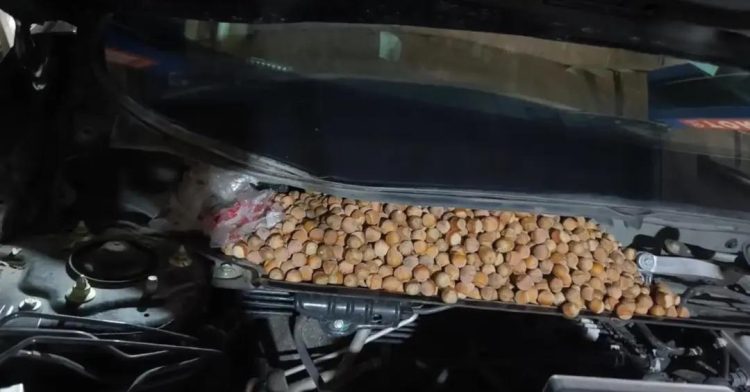In a bid to find a remedy for bedbugs, Canadian scientist Regine Gries has spent nearly a decade studying the parasitic creatures. In fact, she is so dedicated to the project that she actually allows thousands of hungry bedbugs feast off her own blood! Thankfully, her efforts have paid off – she and her husband Gerhard have perfected a chemical that is capable of luring bedbugs away from mattresses.
Regine and Gerhard are both biologists at Simon Fraser University, just outside of Vancouver, in British Columbia. Their lab features a Plexiglass-walled colony with about 5,000 bedbug residents. The bugs live inside glass jars – about 200 to a jar – each covered with a fine mesh that’s held in place using rubber bands. And once a month for the past nine years, Regine has rolled up her sleeves, inverted the jars on to her arms, and allowed the bedbugs to reach through the mesh to bite into her skin!
She feeds as many as five jars of bedbugs at a time. Because they get a chance to eat only once a month, they are hungry enough to ignore their natural fear of light – so it takes only 10 minutes to feed as many as 1,000 bugs. But tolerating bedbugs for 10 whole minutes is nothing short of pure torture. Regine says that the bite of each bug is similar to being bitten by a mosquito. So that’s like a thousand mosquitos attacking her forearm at once. Ouch!
But Regine is no stranger to sacrificing her blood to scientific research. She was previously involved in another project, where her blood served as food for the lab’s mosquito colony. And when the bedbug research began in 2006, she had already acquired years of experience in serving as an all-you-can-eat buffet for bloodsuckers. In fact, she’s the ideal host because she does not suffer severe allergic reactions from the bites, unlike her husband.
Regine revealed that Gerhard had initially tried to feed the bedbugs himself, but his arm had swelled to twice its size. Then, an undergrad student tried feeding the bugs chicken blood procured from a slaughterhouse, but that didn’t work out either. The chickens has been medicated, and their contaminated blood had almost killed the entire bedbug colony. They tried using guinea pigs, but the bugs found it difficult to eat properly through all the fur.
Eventually, Regine took pity on the guinea pigs and decided to let the bugs feed on her own blood. This worked out great because her symptoms aren’t too severe: itching and swelling for a couple of hours. She explained that using human blood is less complicated and risky, so it has all worked out for the best. Since 2006, she has spilled blood approximately 200,000 times, all in the name of science.
Through the course of their research, Regine and Gerhard discovered that bedbugs communicate by odor. They identified five different odors that could be used to attract the creatures, and also found that histamine repelled them. Putting this valuable information to use, they were able to perfect a chemical that can effectively get rid of bedbugs in homes and commercial establishments.
Although the chemical lure is ready, Regine will have to continue feeding the bugs for a while. Canadian company Contech Enterprises will use Regine and Gerhard’s research to build a chemical trap, which might hit the market later this year. Hopefully, she’ll be able to retire from her job as bug-food then.















